Salesforce Reports That Keep Your Remote Sales Team Productive
As businesses grow, it is anticipated that the number of remote employees will continue to grow as well. So, whether your sales team has worked remotely before or not, it is still important to ensure they are being productive. Gone are the days of sitting in cubicles and being watched over after making call after call.
Keeping Your Remote Sales Team Productive is as Simple as 1, 2, 3.
1. Communicate Purpose
The most important thing to keep your sales team productive is to communicate the purpose. Ensuring your sales team understands what is important and why will help them prioritize the different tasks that they have to do.
2. Provide Incentives
Now that your team understands the why behind what to do, they need the motivation to be productive. The best way to do this is by incentivizing your sales team. Incentivizing your team pushes them to not only meet expectations but to exceed expectations. Once you have determined the incentive, now it is time to determine how to measure your teams’ productivity.
3. Showcase Performance – Actionable
The third step is the most important one. You must have a way to visualize how your sales team is doing. Creating reports and dashboards is critical to a productive sales team. This allows you to manage more efficiently because you will see a real-time snapshot of how the team, as a whole, is performing and how each individual rep is performing.
It is important that your sales team is able to see how they are tracking with their own performance. This helps them know how close they are to their goal, what accounts they need to reach out to, and how they can improve. Make sure that these reports and dashboards are easily accessible for your team.
Useful Salesforce® CRM Reports and Dashboards
1. Goal Tracking
Some of the most valuable metrics are how reps are tracking to date and what they were at for the prior year. Showing the Year to Date, Quarter to Date, and Month to Date for the current year and the prior year allows the reps to see how they are tracking. This also allows you to understand how the team as a whole is tracking.
Reporting for Goal Tracking
Creating reports for goal tracking is simple. The easiest thing to do is to create a standard Opportunities report. From here, you can use different groupings, filters, and calculations to get the numbers you are looking for. The best practice is to use multiple reports when creating your dashboard as no one single report will give you everything you are looking for. An example is creating a report for YTD, QTD, MTD, this allows you to show your sales team how they are doing on the year, quarter, and month. Showcasing that next to the previous year can help push your team to beat last year’s marks.
![]()
2. Activity Tracking
After goal tracking, the next measure to focus on is Activity tracking. Activities are vital to a sales rep’s success. In theory, the more activities logged with a prospective client, the more likely they are to close the deal. It is important to be intentional with activity tracking by bucketing different account types and how many calls or meetings are logged in each type.
Reporting for Activity Tracking
You can utilize multiple standard Activities reports. If you are focusing on Activities for your Accounts, then utilize the Activities with Accounts report. From here, you can customize your report for what meets your business need. The best practice is to ensure you have proper groupings such as the activity owner, the task type, the account type, etc. This will help you keep track of how your sales team is performing when it comes to logging activities and also if they are hitting the industries they need to hit.
![]()
3. Pipeline
An understanding of your pipeline and the health of it helps push your sales reps to close deals faster and also helps you manage a forecast of the expected deals to close. This drives insight into understanding how the business as a whole is doing and how the business is expected to do.
Reporting for Pipeline Tracking
Reporting for pipeline tracking is similar to goal tracking reporting. You will still use the Opportunities report type, however, your focus will be on the Opportunity stage instead of YTD, QTD, and MTD. Also, you are able to create a standard funnel to see what stage the bulk of your opportunities are in. And if you like, you also create a bucketed field to analyze what is in the pipe versus what is committed. In addition, you are able to see a trend of what is committed and in the pipe from quarter to quarter. This allows you to push your team to close the deals that are in the final stages as well as understand how much revenue will be generated in the coming quarters.
![]()
Some Additional Reporting Tricks to Help You Manage
- Using targets so the gauges change colors depending on how close your rep is to their target.
- Subscribe to Dashboards and Reports to get consistent updates.
- Download each component as a PDF to send or present.
- Utilize “View Dashboard As” to give a specific view based on the dashboard viewer.
- Generate more powerful analysis and visualizations in Einstein Analytics.
- Get notified when certain numbers are hit through Einstein Analytics dashboards.
Want more ways to inspire your sales team and drive performance? Watch this webinar to learn more.
At Ad Victoriam, our Salesforce consultants can help your business achieve its sales goals. Specifically, we’ll guide you through relationship management, sales structure, pipeline management, and predictive sales. We’ll also work with you to construct reports and dashboards that will help your team reach their goals, see what accounts they need to reach out to, and outline all of the where areas they can improve. And the best part? We can start helping you today, just click here.



